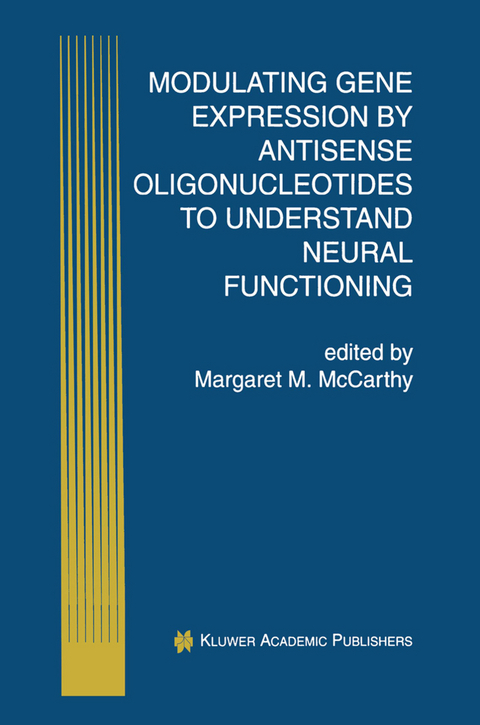
Modulating Gene Expression by Antisense Oligonucleotides to Understand Neural Functioning
Springer-Verlag New York Inc.
978-1-4613-7238-7 (ISBN)
Modulating Gene Expression by Antisense Oligonucleotides to Understand Neural Functioning addresses the origins of that controversy and determines whether the nervous system is a privileged site for antisense oligonucleotide action and not subject to the same vagaries and pitfalls as non-neuronal systems.
Modulating Gene Expression by Antisense Oligonucleotides to Understand Neural Functioning contains chapters by experts in the field that focus on the use of this technique in a variety of behavioral systems, as well as rapid and nonspecific effects and the uptake and metabolism of antisense oligonucleotides by the nervous system.
Modulating Gene Expression by Antisense Oligonucleotides to Understand Neural Functioning features:
experts in the field reporting on the use of antisense oligonucleotide technology in a variety of behavioral systems, including pain control, circadian rhythms, ingestion and control of water balance, and reproductive behaviors;
the novel use of plasmids to express antisense RNA in the nervous system;
the biodistribution and metabolism of antisense oligonucleotides in the nervous system;
rapid and unusual effects; and
non-specific effects.
1. The Use of Antisense Technologies to Understand Neural Functioning: Fact or Fiction?.- 2. Tissue Distribution, Cellular Uptake, and Intracellular Localization and Stability of Centrally Administered Oligonucleotides in the Brain: Implications for Behavioral and Physiological Effects of Antisense Oligonucleotides.- 3. Non-Specific Effects of Centrally Administered Oligonucleotides.- 4. Rapid Onset of Antisense Effects: Evidence for a Close Link Between Gene Expression and Neuronal Activity.- 5. Effects of Dopamine Receptor Antisense RNA Expression Vectors in the Nervous System.- 6. Modification of Native GABAA Receptor Assemblies Using Antisense Oligonucleotides.- 7. Antisense Oligodeoxynucleotides as Specific Tools for Studying Opioid Receptor-Mediated Analgesia.- 8. Antisense Approaches to Investigate the Neuroendocrine Control of Thirst and Sodium Appetite in the Rat.- 9. Steroid-Mediated Behaviors and their Regulation by Antisense Oligodeoxynucleotides.- 10. Modulation of Endocrine and Behavioral Rhythms with Antisense Oligonucleotides.
| Reihe/Serie | Perspectives in Antisense Science ; 1 |
|---|---|
| Zusatzinfo | XI, 172 p. |
| Verlagsort | New York, NY |
| Sprache | englisch |
| Maße | 155 x 235 mm |
| Themenwelt | Medizin / Pharmazie ► Medizinische Fachgebiete ► Neurologie |
| Studium ► 2. Studienabschnitt (Klinik) ► Humangenetik | |
| Naturwissenschaften ► Biologie ► Biochemie | |
| Naturwissenschaften ► Biologie ► Humanbiologie | |
| Naturwissenschaften ► Biologie ► Zoologie | |
| ISBN-10 | 1-4613-7238-0 / 1461372380 |
| ISBN-13 | 978-1-4613-7238-7 / 9781461372387 |
| Zustand | Neuware |
| Haben Sie eine Frage zum Produkt? |
aus dem Bereich


